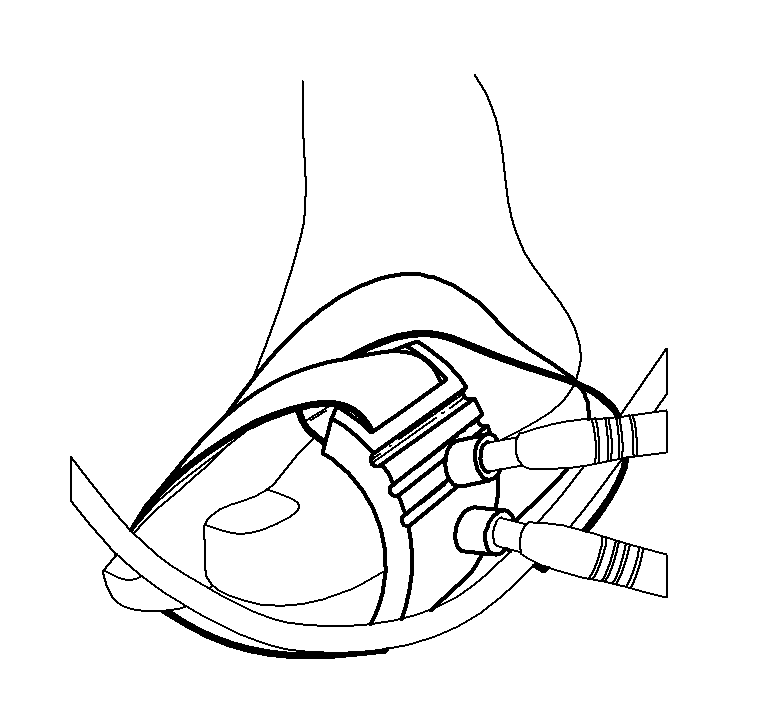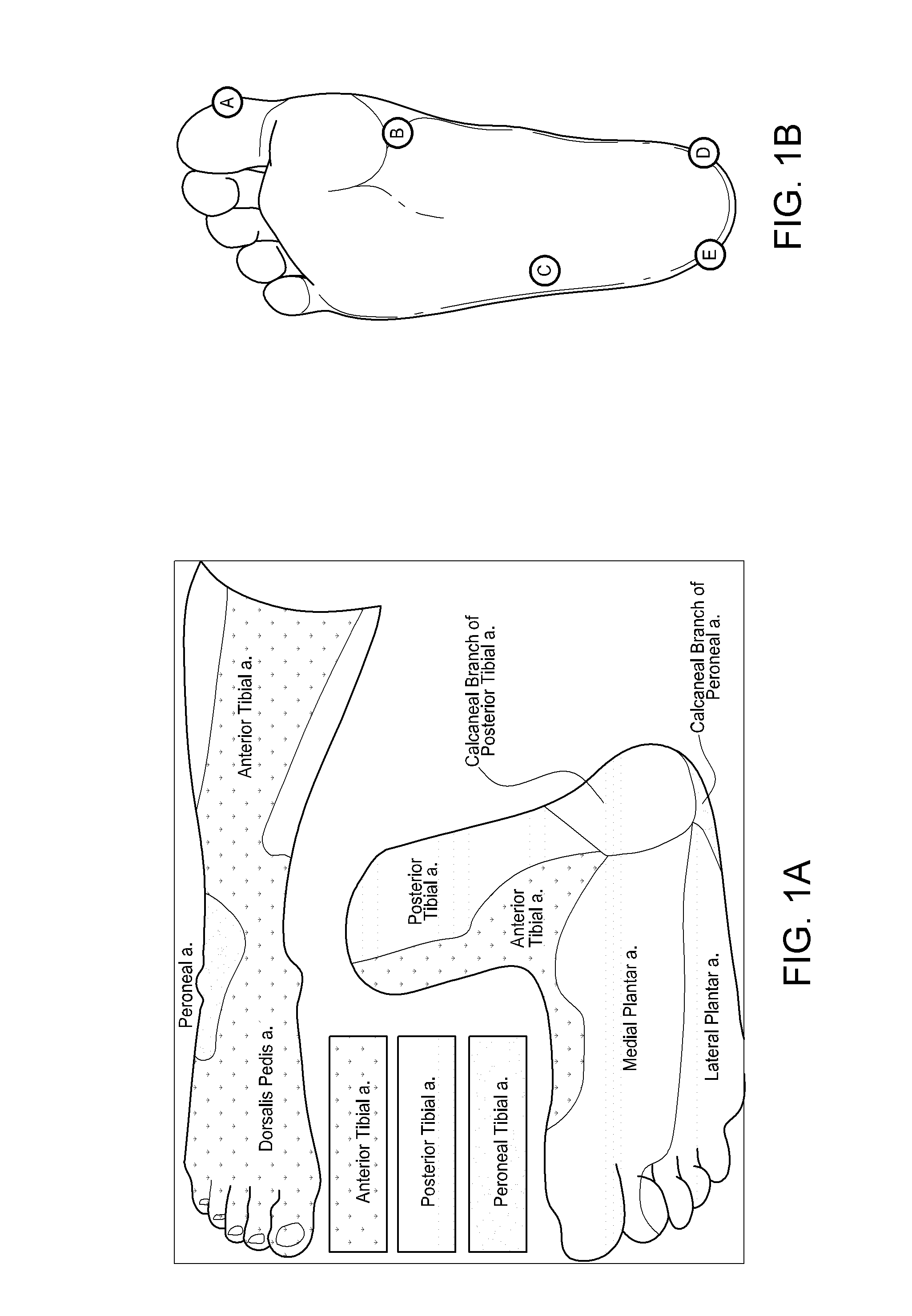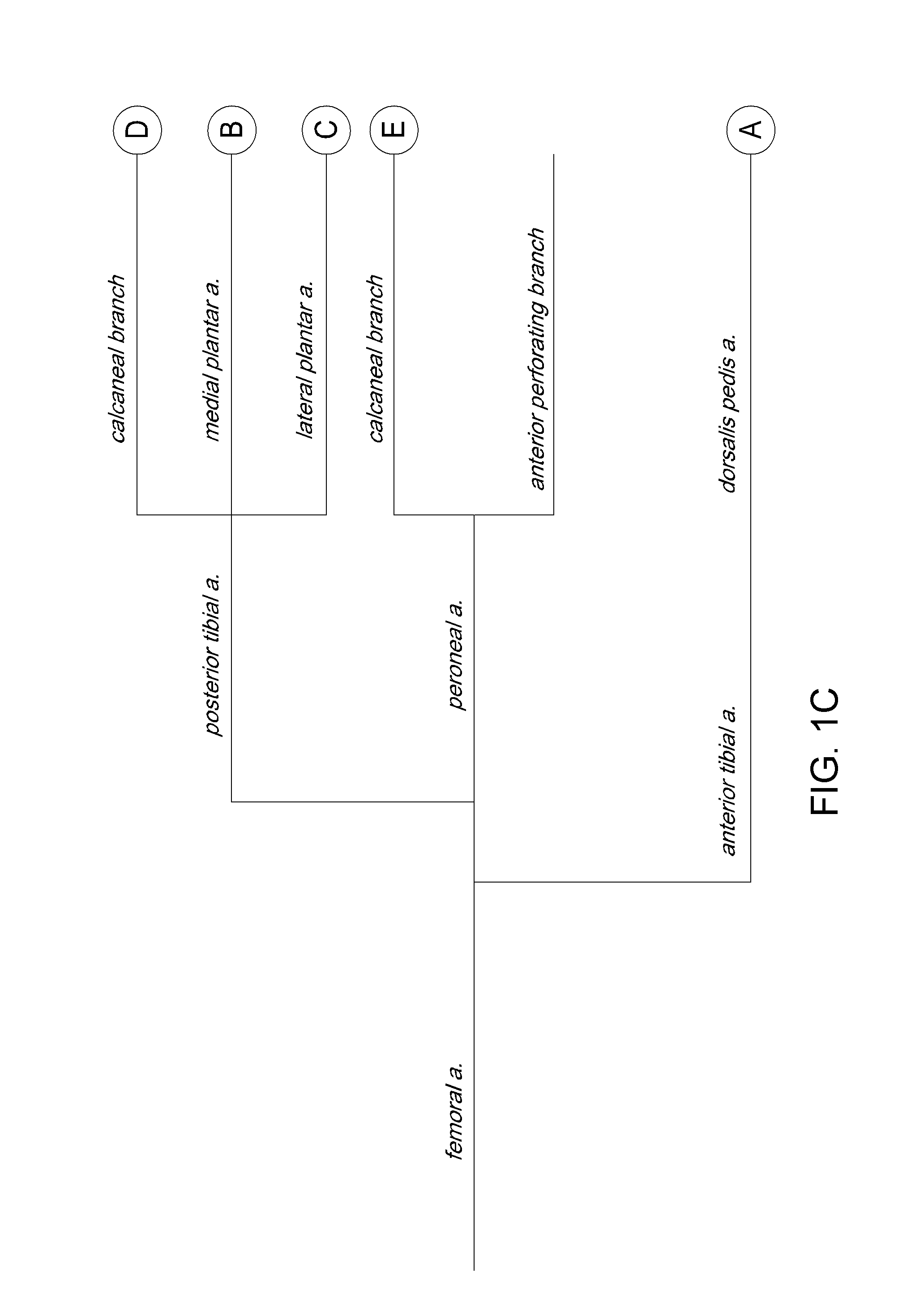Systems and methods for pedal revascularization assessment
a tissue and blood flow technology, applied in the field of tissue blood flow measurement, can solve the problems of tissue damage, gangrene or loss of the limb, ulceration, etc., and patients with pads are at a disproportionately high risk of other cardiovascular diseases like myocardial
- Summary
- Abstract
- Description
- Claims
- Application Information
AI Technical Summary
Benefits of technology
Problems solved by technology
Method used
Image
Examples
Embodiment Construction
[0039]A number of techniques exist for characterizing blood flow, relying on measuring of diffusion of light. Such techniques include Diffuse Correlation Spectroscopy (DCS) and Diffuse Speckle Contrast Analysis (DSCA). Both DCS and DSCA can be used to measure relative and / or absolute blood flow. Other techniques rely on measuring diffusion of light to detect other characteristics of tissue, such as biochemical composition, concentrations of oxyhemoglobin and deoxyhemoglobin, etc. Such techniques include Diffuse Optical Spectroscopy (DOS), Diffuse Optical Tomography (DOT), and Near-Infrared Spectroscopy (NIRS).
[0040]As used herein, “diffuse optical sensor” includes any sensor configured to characterize properties of blood in tissue via measurement of diffuse light. As such, diffuse optical sensors include DCS, DSCA, DOS, DOT, and NIRS sensors. As used herein, the term “diffuse optical flow sensor” includes any sensor configured to characterize blood flow in tissue. As such, diffuse o...
PUM
 Login to View More
Login to View More Abstract
Description
Claims
Application Information
 Login to View More
Login to View More - R&D
- Intellectual Property
- Life Sciences
- Materials
- Tech Scout
- Unparalleled Data Quality
- Higher Quality Content
- 60% Fewer Hallucinations
Browse by: Latest US Patents, China's latest patents, Technical Efficacy Thesaurus, Application Domain, Technology Topic, Popular Technical Reports.
© 2025 PatSnap. All rights reserved.Legal|Privacy policy|Modern Slavery Act Transparency Statement|Sitemap|About US| Contact US: help@patsnap.com



